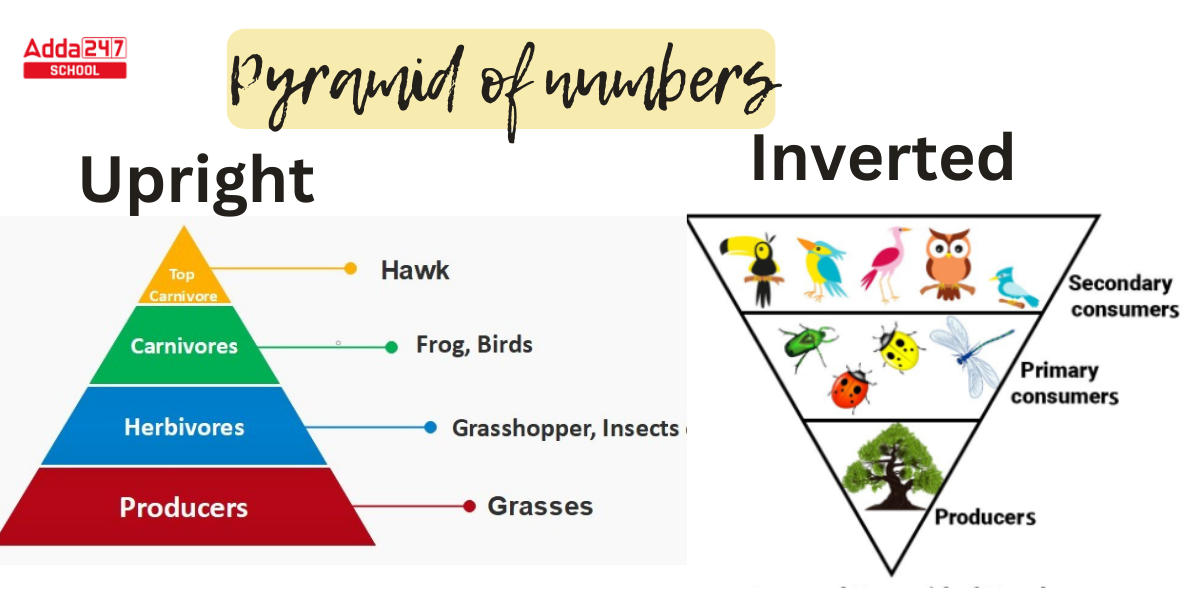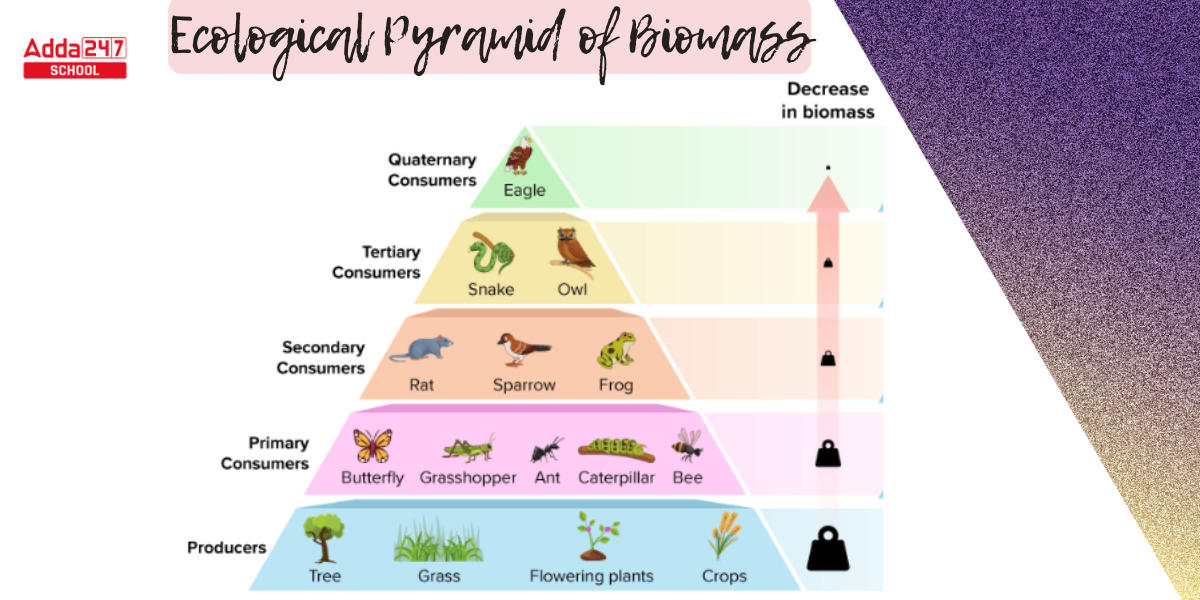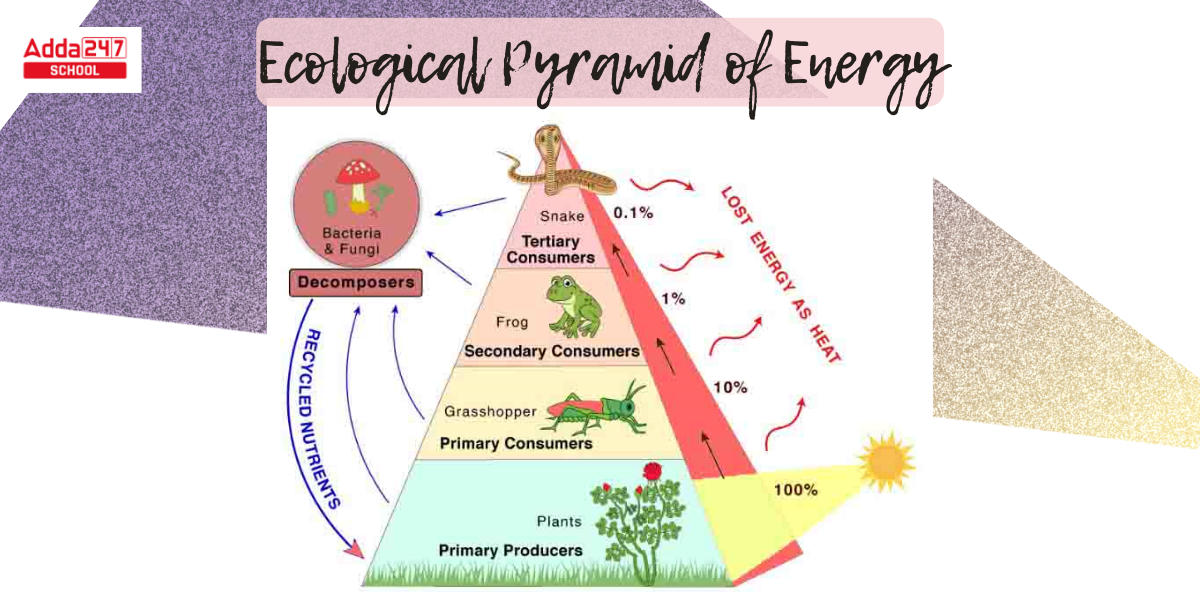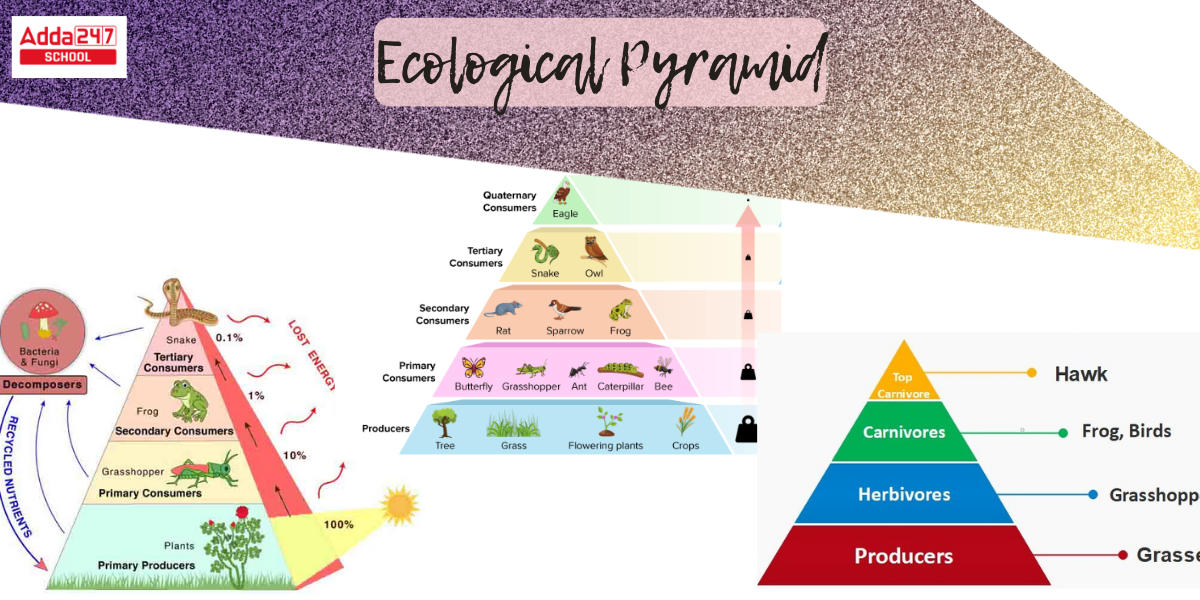A visual representation of diverse living species at various trophic levels is an ecological pyramid. The bottom of the ecological pyramid is usually held by producers, who are followed by primary consumers at the following level, secondary consumers, and finally tertiary consumers or creatures. The various forms of ecological pyramids are determined by the amount of energy or biomass available for every trophic level.
The first trophic level is occupied by autotrophs or producers. Herbivores are at the second trophic level, small carnivores are at the third, and larger carnivores are at the fourth. The types, characteristics, significance, and limitations of the Ecological Pyramid will be addressed and discussed in this article.
Ecological Pyramid
What is an Ecological Pyramid? An ecological pyramid is an illustration of the link between diverse living beings at multiple trophic levels across a food chain.
Charles Elton (1927) proposed the concept of a number pyramid (“Eltonian pyramid”). Bodenheimer presented the pyramid form for biomass in 1938, while Hutchinson and Linderman suggested the pyramid structure for productivity in 1942.
The ecological pyramid is constructed based on the number of people, energy, and biomass, and it is fashioned like a pyramid, as the name suggests. The ecological pyramid is also used to understand how different living beings in an environment are related to one another. It also demonstrates who consumes whom, as well as the flow of energy.
Ecological Pyramid Characteristics
Some Ecological Pyramid characteristics are discussed below.
- These Ecological Pyramids are shaped like real pyramids.
- The ecological pyramid is made up of two to four tiers. The base is the broadest and is occupied by the lowest trophic level, i.e., producers.
- The producers are at the bottom of an ecological pyramid with a large population.
- Apex predators are found at the top of an ecological pyramid, with a relatively tiny population.
- Energy flows from bottom to top in the Ecological Pyramid, meaning that energy gets transmitted from autotrophs to primary producers instead of primary consumers, and so on.
- Lower trophic level energy is larger than higher trophic level energy, and herbivores outnumber predators.
- The pyramid’s pointed shape results from the fact that the availability of energy or biomass decreases with each successive level of the pyramid.
- In the case of the number pyramid, the uppermost level will have fewer people, but their respective body sizes and volume will increase.
- Herbivores outnumber producers with regard to number and biomass.
Ecological Pyramid Types
The ecological pyramid serves to explain the relationships between creatures in an ecosystem. The pyramid ideally illustrates who consumes whom, as well as the order in which energy flows. Ecological pyramids are classified into three types based on the quantity of organisms, biomass, and energy. These are listed below:
- Pyramid of numbers
- Pyramid of biomass
- Pyramid of energy
Ecological Pyramid of Numbers
The number of creatures in each trophic level constitutes a level in a pyramid of numbers.
- Ecological Pyramid of Number represents the number of organisms in each trophic level without taking into account their individual sizes or biomass.
- The number pyramid is normally upright.
- However, in other cases, the pyramid is not erect. For example, in the detritus food chain, several creatures feed on a single dead plant or animal.
- As one travels up the pyramid, the number of creatures diminishes.
- It’s near the bottom since there are so many producers.

Ecological Pyramid of Biomass
The biomass pyramid is a pyramid that shows the total mass/ weight of each trophic level in a certain food chain in an ecosystem.
- The ecological pyramid of biomass, like the pyramid of numbers, can be upright or inverted.
- The biomass pyramid represents the ecological pyramid formed by taking into account the amount of biomass generated by each trophic level’s living system.
- Producers have the most biomass in this pyramid, followed by primary consumers, who have a smaller amount of biomass than producers.
- As the number of producers increases, forest and grassland ecological systems are examples of upright biomass pyramids.
- Because a vast number of zooplankton rely on a smaller amount of phytoplankton, the ocean ecosystem is an example of an inverted pyramid.
- Secondary consumers possess less biomass than the primary consumers, and biomass is found at the peak of the pyramid.
- Depending on the trophic level of an ecosystem, approximately 15 to 20% of biomass is transferred to the next level.

Ecological Pyramid of Energy (Energy Pyramid)
The pyramid of energy is the ecological pyramid constructed by measuring the flow of energy from a particular trophic level to the next.
- The ecological pyramid of energy is always erect/inverted.
- The producers at the bottom of the energy pyramid have the most energy, while the uppermost consumer at the top has the least energy.
- The energy content of every level of trophic structure in an ecological system is addressed by this pyramid.
- The standard energy pyramid is divided into three levels: producer, consumer, and decomposer.
- The producers, at the bottom of the pyramid, have the greatest energy from the sun fixed via photosynthesis.
- creatures at the consumer level take in the plants at the production level.
- The decomposer level is at the top of the pyramid and contains creatures that break down dead stuff.
The flow of energy within this pyramid demonstrates that energy cannot be generated or destroyed, as stated by the law of thermodynamics. - Lindeman’s 10% rule – According to Lindeman’s 10% regulation law, only 10% of the energy is transported from one level to another since nearly 90% is lost as heat energy is used in breathing, some are used in physiological cycles, and the remainder is consumed by decomposers.

Significance Ecological Pyramid
The ecological pyramid is extremely important in an ecosystem and the reasons are discussed below.
- An ecological pyramid demonstrates how efficiently energy is transported from one stage to the next and aids in the quantification of energy in a food chain.
- Ecological pyramids demonstrate the feeding of diverse creatures in various habitats, highlighting their dietary patterns and explaining the connection between the many layers within them.
- The ecological pyramid also aids in keeping track of an ecosystem’s overall health and condition, as well as in the restoration of equilibrium.
- It also aids in understanding how additional damage to an environment might be avoided.
Ecological Pyramid Limitation
The following are the constraints of the ecological pyramid system.
- Multiple species can reside in multiple trophic levels, as in a food web. As a result, food webs are ignored by this method.
- This pyramid fails to include diurnal or sporadic variants.
- These pyramids are only relevant to simple food chains, which occur infrequently in nature.
- The ecological pyramid ignores saprophytes and considers them as non-living components of the environment, ignoring the fact that they play an important role in maintaining the environment’s equilibrium.
- This pyramid makes no mention of the rate or speed at which energy travels from one trophic level to the next.
- These pyramids do not include information regarding seasonal and climatic changes.
- Significant sources of energy, such as trash and humus, are completely neglected in the ecological pyramid, yet their immense importance in the environment.
Related Post:









 BTEUP Result 2025 Out at bteup.ac.in, Do...
BTEUP Result 2025 Out at bteup.ac.in, Do...
 SGBAU Result 2025 Out, Check Summer Seme...
SGBAU Result 2025 Out, Check Summer Seme...
 How To Prepare for CUET Accountancy Exam...
How To Prepare for CUET Accountancy Exam...









